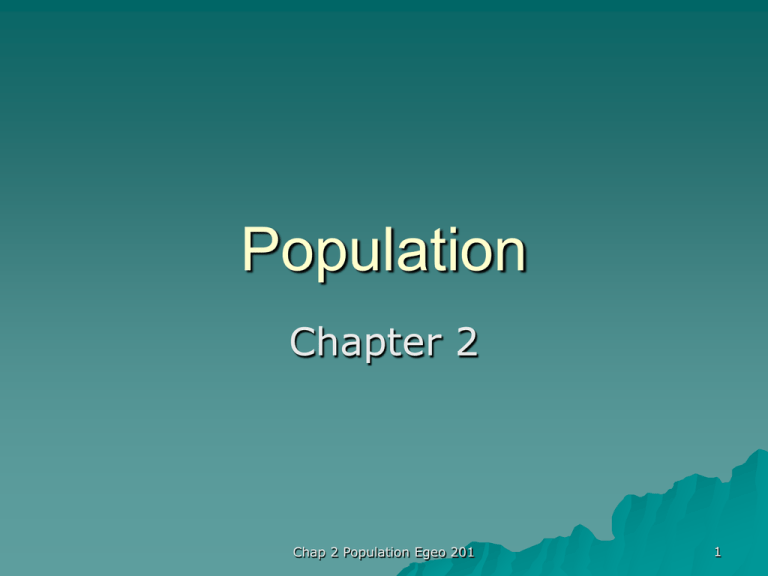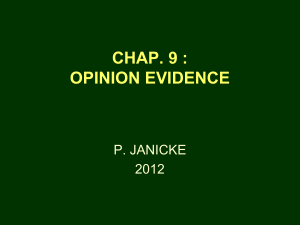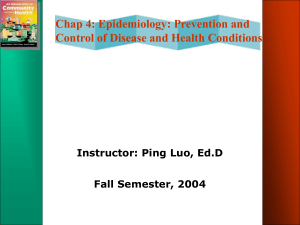
Population
Chapter 2
Chap 2 Population Egeo 201
1
Oct 2, 2013
Note
first extra credit lecture
Note means of making a definition
Friday quiz on chap 1, Edward, and
videos
Oct 4, 2013
Last names on assignments
If we can’t read it we don’t
Some had excellent answers
regarding Syria
Chap 2 Population Egeo 201
2
Class Based Vernacular West
Boundary – Fall 2013
Chap 2 Population Egeo 201
3
Class Based Vernacular West
Boundary – Fall 2013
Chap 2 Population Egeo 201
4
Class Based Vernacular West
Boundary – Spring 2012
Chap 2 Population Egeo 201
5
ClassFall
Based
Vernacular West
2012 Class
Boundary – Spring 2012
Chap 2 Population Egeo 201
6
World Population Centers - Today
Demographics and Migration
7
World Population
http://www.census.gov/main/www/popclock.html
Chap 2 Population Egeo 201
8
Population by Continent
Rank
Continent
Population
2013
±% p.a.
2010-2013
7,162,119,000
1.17%
—
World
1
Asia
4,298,723,000
1.06%
2
Africa
1,110,635,000
2.51%
3
Americas
972,005,000
1.03%
4
Europe
742,452,000
0.10%
5
Oceania
38,304,000
1.47%
Chap 2 Population Egeo 201
9
Density Measures
Thing
on top – Area on bottom
Arithmetic D = Pop/Area
– Limited value
Physiological
D = Pop/Arable Area
– Pre-Industrial indicator of Carrying
Capacity
Agricultural
D = Farmers/Arable Area
– Indicator of Development
Chap 2 Population Egeo 201
10
Here size is
related to
pop not area.
Population Cartogram
Demographics and Migration
11
DEMOGRAPHIC TRANSITION
MODEL
Chap 2 Population Egeo 201
12
Today
Investigate the Demographic
Transition Model
Investigate Types of Diagrams used
to display and map Demographics
Chap 2 Population Egeo 201
13
1. DEFINING
GENERAL
TERMS
AND
CONCEPTS
Chap 2 Population Egeo 201
14
Basic Terms
Crude Birth Rate
Crude Death Rate
Rate of Natural Increase
Infant Mortality Rate
Fertility Rate
Chap 2 Population Egeo 201
15
Crude Birth Rate
CBR
Number of live births per year =
3,180
Divided by population = 200,000
Times 1,000
CBR = [(3,180)/200,000] x 1,000
CBR = 15.9 births per 1,000 people
Chap 2 Population Egeo 201
16
Crude Birth Rate
Chap 2 Population Egeo 201
17
Crude Death Rate
CDR
Number of deaths per year = 1,860
Divided by population = 200,000
Times 1,000
CDR = [(1,860)/200,000] x 1,000
CDR = 9.3 deaths per 1,000 people
Chap 2 Population Egeo 201
18
Crude Death Rate
Chap 2 Population Egeo 201
19
Rate of Natural Increase
RNI
CBR = 15.9
Minus CDR = 9.3
Divided by 10
RNI = (CBR – CDR)/10
= [(15.9 -9.3) /10
= 0.66% growth per year
Chap 2 Population Egeo 201
20
Rate of Natural Increase
Chap 2 Population Egeo 201
21
Infant Mortality Rate
IM
number of newborns dying under
0ne year of age = 25
divided by the number of live births
during same year = 3,180
Times 1,000
IM = (25/3,180) x 1,000
IM = 7.9 deaths per 1,000
births
Chap 2 Population Egeo 201
22
Doubling Time
Rate of Nat.
Increase
Doubling Time
1%
70yrs
2%
35yrs
3%
24yrs
USA 0.545 %
128yrs
http://www.metamorphosisalpha.com/ias
/population.php
Chap 2 Population Egeo 201
23
Infant Mortality Rate
Chap 2 Population Egeo 201
24
Fertility Rate
Average
Number of child births
Per woman
Since
a couple is 2 people, need a
little more than 2 births to replace
the parents
2.1 is considered a stable growth
fertility rate in the USA or a
Developed Country
Chap 2 Population Egeo 201
25
Fertility Rate
Chap 2 Population Egeo 201
26
Types of Diagrams
Demographic
Transition Model
Population Pyramid
Trend Diagrams
– Temporal (over time)
– Spatial (over space
Survivorship
Diagram
Chap 2 Population Egeo 201
27
2.DEMOGRAPHIC
TRANSITION
MODEL
Chap 2 Population Egeo 201
28
Birth rate
Natural
increase
Death rate
Time
Note: Natural increase is produced from the excess of births over
deaths.
Chap 2 Population Egeo 201
29
Another way of displaying rate of natural increase
Curve for
changing Rate
of Natural
Increase
during the
Demographic
Transition
Chap 2 Population Egeo 201
30
What is the Demographic
Transition Model?
The
"Demographic Transition" is a
model that describes population
change over time.
– Our main concern has been growth
– Now in Industrial Countries it is in
decline
Chap 2 Population Egeo 201
31
What is the Demographic
Transition Model?
It
is based on an interpretation
begun in 1929 by the American
demographer Warren Thompson, of
the observed changes, or transitions,
in birth and death rates in
industrialized societies over the past
two hundred years or so.
Chap 2 Population Egeo 201
32
What is the Demographic
Transition Model?
The
"Demographic Transition" is a
model/ a scientific hypothesis
– Until the 1990s it seemed to work well
with Developed Countries
– It worked pretty well with Less
Developed Countries
Chap 2 Population Egeo 201
33
What is the Demographic
Transition Model?
The
"Demographic Transition" is
based on the Scientific Method,
– so we are continually “experimenting”
with it and improving it
Here we will critique it with Italy &
Japan
Chap 2 Population Egeo 201
34
Impacts and Consequences
The next several sets of tables summarizes the
measures of impacts of the Transition
Four Stages Impacts
1. Very Low Growth
2. High Growth
3. High but Slowing
Growth
4. Low Growth
Some now see a fifth stage
5. ??? Decline sets in ????
Which is the case in
Europe and Japan
Factors That Change over the
Stages
Family Size
Infant Mortality & Fertility
Rates
Family Economics
Status of Kids
Gender Roles
Health Conditions
Child Deaths
Population Size
Chap 2 Population Egeo 201
35
Demographic Transition Model
Stage 1 : Pre
industrializat
ion: Stable
population
growth
Stage 2:
Rapid
population
growth
Stage 3:
Continued and
decreasing
population growth
Stage 4:
Stable low
population
growth
High Birth
rates
High Birth
rates
Falling Birth rates
Low Birth rates
Family Size
-- planned
Family
Planning -The general
plan is to have
many kids
Family Planning
-- The general
plan is to have
many kids
Family Planning -The plan is to have
fewer kids
Trends
stabilize with
2 kid families
or less
Infant
Mortality
Rate/
Fertility
Rate
Many children
because few
survive-- high
fertility rate
Still many kids
because
expect few to
survive -- high
fertility
Lower infant
mortality rates -less pressure to
have children,
fertility declines
Small family
size low
fertility rate
Children are
still useful for
work
Increased
mechanization and
industrialization
means less need for
labor/kids
Women are
working in
great
numbers
CBR
Family
Economics
Many children
are needed to
work the land
Chap 2 Population Egeo 201
36
Demographic Transition Model
Stage 1 : Pre
industrializati
on: Stable
population
growth
Stage 2: Rapid
population
growth
Stage 3:
Continued and
decreasing
population
growth
Stage 4: Stable
low population
growth
High Birth rates
High Birth rates
Falling Birth rates
Low Birth rates
Status of
Kids
Children are a
sign of virility &
status and old
age insurance
Children are a
sign of virility &
status and old
age insurance
Increased desire
for material
possessions and
less desire for
large families
Kids are an
expense & “bling”
Gender
roles
Strong sex
roles
Strong sex roles
Emancipation of
women
Emancipation of
women
CBR
Chap 2 Population Egeo 201
37
Stage 1 :
Pre
industrializ
ation:
Stable
population
growth
Stage 2:
Rapid
population
growth
Stage 3:
Continued
and
decreasing
population
growth
Stage 4:
Stable low
population
growth
CDR
High Death
Rates
Falling Death Death rates
Rates
Low
Death rates
Low
Health
Conditi
ons
Poor Diet &
Sanitation,
Famine and
Disease
Improved
diet,
sanitation &
medical care
Child
Deaths
High child
mortality
before age 5
A decrease in Child
child
mortality
mortality
very low
Slight
No change
improvement
Stable
After Copper, Models of Demography,
http://www.bized.ac.uk/virtual/dc/copper/theory/th10.htm
Chap 2 Population Egeo 201
38
Stage 1 :
Pre
industrializ
ation:
Stable
population
growth
Stage 2:
Rapid
population
growth
Rate
Natural
Increase
Very Low
Growth
High Growth Slowing
Growth
Population
Size
Small
Population
Bigger
Stage 3:
Continued
and
decreasing
population
growth
Bigger
Stage 4:
Stable low
population
growth
Low Growth
Biggest
After Copper, Models of Demography,
http://www.bized.ac.uk/virtual/dc/copper/theory/th10.htm
Chap 2 Population Egeo 201
39
In Class Exercise
Divide
into groups of 2 or 3
For the next two diagrams determine
the years for the start of Stage 2, 3
and 4 as appropriate
Sources
http://www.marathon.uwc.edu/geography/demotrans/demtran.htm
Chap 2 Population Egeo 201
40
Developed Country
Example: Sweden
Note that reality is a bit messier
than theory.
Chap 2 Population Egeo 201
41
Developing Country
Example: Mexico
This looks more like what
we are expecting
Chap 2 Population Egeo 201
42
Combination emphasizing changes over time, Sweden takes
longer and Sweden starts from lower CBR and CDR
Chap 2 Population Egeo 201
43
3. TYPES
OF
DIAGRAMS
Chap 2 Population Egeo 201
44
More Types of Diagrams
These
diagrams help us to
understand the mechanism causing
the Demographic Transition Model to
operate and its impact
– Survivorship Diagram
– Stabilization Ratio Diagram
– Population Pyramids
– Temporal Trends
– Spatial Trends
Chap 2 Population Egeo 201
45
Survivorship Diagram: Emphasis on
longer life expectancy as CDR drops
Now 90%
live past
55yrs old
Less then
10%
reached
25yrs old
Chap 2 Population Egeo 201
46
Public Health: One of the many
past causes of high child
mortality rates
Chap 2 Population Egeo 201
47
Recent Exponential Growth of World’s Population as countries
enter Stage 2 and Stage 3 of the Demographic Transition
HIGHLIGHTS IN WORLD POPULATION GROWTH
1
billion
in 1804
2 billi
on in
1927
(123
years
later)
3 billion
in 1960
(33 years
later)
4 billion
in 1974
(14 years
later)
5 billion
in 1987
(13 years
later)
Chap 2 Population Egeo 201
7.1 billion
in 2013 (23
years
later)
48
Total Population of the World by
Decade, 1950–2050
http://www.infoplease.com/ipa/A0762181.html
Total world population
(mid-year figures)
Ten-year growth
rate (%)
1950
2,556,000,053
18.9%
1960
3,039,451,023
22.0
1970
3,706,618,163
20.2
1980
4,453,831,714
18.5
1990
5,278,639,789
15.2
2000
6,082,966,429
12.6
6,848,932,929
10.7
7,584,821,144
8.7
8,246,619,341
7.3
8,850,045,889
5.6
9,346,399,468
—
Year
(historical and projected)
The good news – Growth
rate is in decline
The bad news – we will try
to add another 2.5 bill.
2010
2020
Mainly
another
Billion people
in Africa
2030
2040
2050
1
1
1
1
1
Chap 2 Population Egeo 201
49
Stabilization of World’s population is
still over a generation away
Chap 2 Population Egeo 201
50
Guatemala Stage 2
Population Pyramids
• Demonstrate where the
population is by age cohort
• Also can see Demographic
Stage
Mexico is going
into Stage 3
Chap 2 Population Egeo 201
51
USA – what Stage would you say this is???
Chap 2 Population Egeo 201
52
Stage 4: Sweden
Demographic Indicators
Birth Rate: 12 per thousand
Total fertility rate: 1.8 births
Natural increase: 0.1% per
year 1990-2000
Age structure: 18% under 15
yrs.age
Italy with declining
population. Will there be a
Stage 5???
Demographic Indicators
Birth Rate: 9 per thousand
Total fertility rate: 1.2 births
Natural increase: -0.1% per
year 1990-2000
Age structure: 14% under 15
yrs.age
Chap 2 Population Egeo 201
53
Japan, an upside down pyramid in the making?
Population collapse???
Chap 2 Population Egeo 201
54
Example of how
families adjust to
lower infant
mortality rates
with lower fertility
rates.
Infant Mortality Rate per 1,000
Result is a decline
in CBR
This is a temporal
trend diagram.
Chap 2 Population Egeo 201
55
Spatial Trend Diagram: Countries
with higher IM have higher Fertility
Rates.
Chap 2 Population Egeo 201
56
Comparative Temporal and Spatial Data Diagram
What is occuring here? Speculate why.
Chap 2 Population Egeo 201
57
Comparison of Development and Wealth to Population
Growth Rates across Countries
Births are solid line, deaths
dashed
Note little difference in
death rate, large difference
in birth rate
Result poorer countries
grow faster, rich ones
little to none, today even
declines
Chap 2 Population Egeo 201
58
Additional Details on Mexico
If you want more information on
Mexico click below
http://www.un.org/esa/population/me
etings/EGMPopAge/Partida_Figures.p
df
Chap 2 Population Egeo 201
59
Where is the World’s Population Growing? Declining?
Chap 2 Population Egeo 201
60
ONE LAST
CONCEPT
Chap 2 Population Egeo 201
61
Dependency Ratio
Ratio
of non-working population to
working age population
Non-Workers are the young and
aged retirees
– young are usually 15 yrs old and below
– retirees are usually 64 yrs old and
above
Chap 2 Population Egeo 201
62
Dependency Ratio
Cape Verde:
Mostly Kids
Chile: Kids still
dominate
Chap 2 Population Egeo 201
Denmark: Split
between kids &
elderly
63
Pakistan’s High
Dependency Ratio now
and in the future based
on lots of kids but few
elderly.
However note how the
young population is
expected to stabilize
and elderly grow.
Chap 2 Population Egeo 201
64
Dependency Ratio Woes
A
© Copyright 2006, From The Wilderness Publications,
www.fromthewilderness.com. All Rights Reserved. This story may NOT be
posted on any Internet web site without express written permission. Contact
admin@copvcia.com. May be circulated, distributed or transmitted for nonprofit purposes only.
rising dependency ratio is also a
concern in many countries that are
facing aging populations, since it
becomes difficult for pension and
social security systems to provide to
retirees.
Chap 2 Population Egeo 201
65
More on Dependency
Chap 2 Population Egeo 201
66
Japan showing its
high number of
dependants to
working age
population
•lots of elderly
(nearly black color)
• Working age
population (purple
color)
•few kids (dark
purple color)
Result is high
Dependency Ratio
Chap 2 Population Egeo 201
67
Malthus – And the
Doomsdayers vs.
Cornicopians
Chap 2 Population Egeo 201
68
Pop. Growth
Food
Growth
Pop. Growth
Food Growth
Chap 2 Population Egeo 201
69
Click page
to load
Lester Brown
Chap 2 Population Egeo 201
70
Sections 2.9 and 2.10
I
will leave these for you to read and
reflect on by yourself
If you have questions raise them in
class or at the voluntary tutorial
session
Chap 2 Population Egeo 201
71
Declining Birth Rate 1975-2005
Chap 2 Population Egeo 201
72
% Women Using Family
Planning
Chap 2 Population Egeo 201
73
Type of
Family
Planning
Chap 2 Population Egeo 201
74
Dr. Snow’s study:
On which water
pump did he
remove the
handle???
Chap 2 Population Egeo 201
75
Global Aids pattern, note the region with no data
76
Chap 2 Population Egeo 201
– what might this inform
us about culture?
Diffusion of Aids
• Besides contagious
diffusion what other
type(s) of diffusion are
present on this map?
Diffusion types
a. relocation
b. expansion
c. hierarchical
d. contagious
e. stimulus
Chap 2 Population Egeo 201
77
VIDEOS TO
LOOK AT
Chap 2 Population Egeo 201
78
Interesting Videos
Hans Rosling on global population growth – TED
Lecture
http://www.ted.com/talks/lang/eng/hans_rosling_
on_global_population_growth.html
Chap 2 Population Egeo 201
79
Interesting Videos
Population divide – around the world
http://www.youtube.com/watch?v=LygyRoxRzyE&feature=rel
ated
Right leaning Heritage Foundation -- Decline of Europe based
on Demographic Collapse (go to minute 8:00)
http://www.youtube.com/watch?v=xlkEYoKCkA&feature=related
An Egyptian take: Muslim majority in Europe in 20 years (in
Arabic)
http://www.youtube.com/watch?v=CSWLLc6uikE&feature=fv
w
A historical take: Demographic Transition in Europe; Mortality
Decline – Yale University standard lectures
http://academicearth.org/lectures/mortality-decline-in-europe
Chap 2 Population Egeo 201
80
Let’s Play with the Data
Chap 2 Population Egeo 201
http://www.gapminder.org /
81
A FEW
STUDY
QUESTIONS
Chap 2 Population Egeo 201
82
Study Questions: Population
The following questions are to help you with the current notes and all
the readings in this component of the course
1.
a.
b.
c.
d.
e.
Explain what is meant by each of the following terms:
crude birth rate
infant mortality rate
dependency ratio
Crude death rate
Rate of Natural Increase
2. Name a country where the death rate has fallen rapidly since WWII.
(i) For that country give reasons why the death rate has fallen.
(ii) How has this change in death rate affected life expectancy?
After: http://www.getthatgrade.co.uk/issue_02/test.htm
Chap 2 Population Egeo 201
83
3. The diagram below shows a simplified version of the demographic
transition model.
(I) What was happening to the population total in Stage 2?
(ii) What was happening to the population total in Stage 3?
(iii) Name a country which has developed a policy to reduce its birth
rate.
(iv) Why was this policy needed?
(v) Describe the policy.
(vi) How successful has the policy been? Mention any problems that
the policy has caused, as well as its successes.
Chap 2 Population Egeo 201
84
4. Should we be worried about private
pensions in the future? What if a
growing stock market is tied to a
growing population and population
declines?
Chap 2 Population Egeo 201
85










